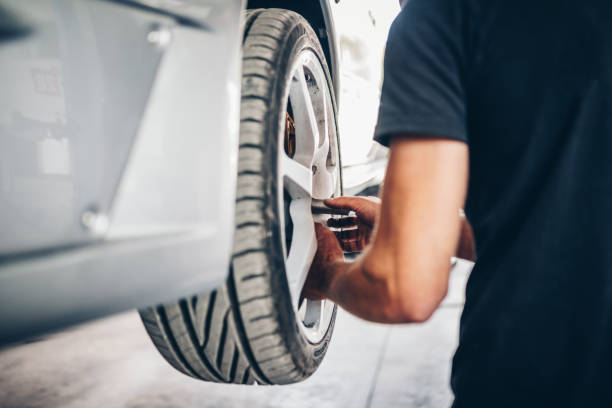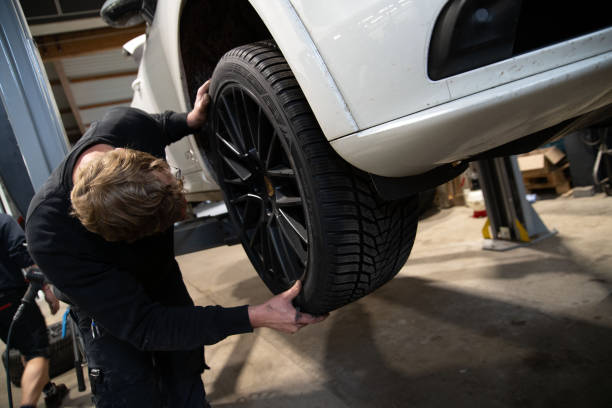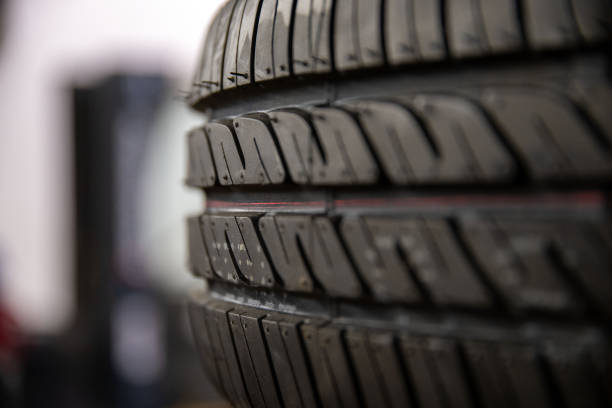Maintaining your tires for a longer life starts with basic care. Check pressure, rotate regularly, and inspect for damage.
Tires are essential for your vehicle’s safety and performance. They endure miles of wear and tear daily. Proper maintenance can save you money and prevent accidents. But how do you keep your tires in top shape? This guide will show you simple steps to extend the life of your tires.
From checking pressure to rotating them, each tip will help you get the most out of your tires. Learn how easy it is to keep your tires in great condition and ensure a smoother, safer ride.

Regular Tire Inspections
Maintaining your tires is crucial for safety and longevity. Regular inspections can prevent unexpected issues. This practice also ensures a smooth and safe drive. Let’s explore some key steps for tire inspections.
Check For Wear And Tear
Inspect your tires for uneven tread wear. Use a tread depth gauge to measure tread depth. Tires should have at least 2/32 inch of tread. Look for signs of balding, cracks, or bulges. Uneven wear may indicate alignment issues. Rotate tires every 6,000 to 8,000 miles to ensure even wear.
Look For Foreign Objects
Check tires for nails, glass, or other objects. Remove any debris stuck in the tread. Foreign objects can cause punctures or blowouts. If you find a nail or screw, don’t pull it out. Visit a tire shop for proper repair. Regular inspections help you catch these issues early.

Proper Tire Inflation
Maintaining the correct tire inflation is key to prolonging the life of your tires. Properly inflated tires ensure better fuel efficiency, improved handling, and reduce the risk of tire failure. Let’s delve into the steps to keep your tires in optimal condition.
Check Tire Pressure
Regularly checking your tire pressure is essential. Ideally, you should check it at least once a month. Use the manufacturer’s recommended pressure settings, which you can find in the owner’s manual or on a sticker inside the driver’s door.
- Ensure tires are cold before checking pressure.
- Check pressure in all tires, including the spare.
- Adjust pressure as needed, especially before long trips or carrying heavy loads.
Use A Reliable Gauge
Invest in a reliable tire pressure gauge. Digital gauges provide accurate readings and are easy to use. Avoid relying on gas station gauges as they can be inaccurate due to frequent use and exposure.
| Type of Gauge | Accuracy | Ease of Use |
|---|---|---|
| Digital Gauge | High | Very Easy |
| Dial Gauge | Medium | Easy |
| Stick Gauge | Low | Moderate |
Having a reliable gauge helps you maintain the correct tire pressure. This, in turn, ensures your tires wear evenly and last longer.
Tire Rotation
Tire rotation is essential for maintaining your tires. It helps them wear evenly, extending their lifespan. Regular rotations ensure your car’s performance stays optimal. This simple maintenance task can save you money in the long run.
Follow Manufacturer’s Schedule
Always follow the tire rotation schedule in your car’s manual. Different vehicles have unique needs. Some require rotations every 5,000 miles, others every 7,000 miles. Sticking to this schedule ensures your tires wear evenly.
Check your manual for the best rotation pattern. Front-wheel drive cars often need a different pattern than rear-wheel drives. Proper rotation keeps your ride smooth and safe.
Benefits Of Regular Rotation
Regular tire rotation offers many benefits. It helps your tires last longer. Even wear reduces the risk of blowouts. Your car handles better with evenly worn tires.
You also save money over time. Fewer replacements mean more savings. Plus, your fuel efficiency improves. Well-maintained tires decrease rolling resistance. This leads to better gas mileage.

Wheel Alignment
Maintaining proper wheel alignment is essential for tire longevity. Misaligned wheels can cause uneven tire wear, reducing their lifespan. Regular wheel alignment checks can help ensure your tires last longer, saving you money in the long run.
Signs Of Misalignment
Several signs indicate your wheels may be misaligned. These include uneven tire wear, a steering wheel that pulls to one side, and vibrations while driving. If you notice any of these symptoms, your wheels may need alignment.
Professional Alignment Services
Professional alignment services ensure your wheels are correctly aligned. Technicians use specialized equipment to adjust the angles of your wheels. This process helps distribute the weight of your vehicle evenly across the tires, reducing wear.
Regularly scheduled alignments can prolong the life of your tires. Most experts recommend checking alignment at least once a year or every 12,000 miles. Make sure to consult your vehicle’s manual for specific recommendations.
Balancing Tires
Balancing your tires is crucial for a smooth and safe ride. It ensures your tires wear evenly, which extends their life. Proper balance also helps prevent vibrations that can affect your driving comfort. Let’s explore why balance is important and how to recognize unbalanced tires.
Importance Of Balance
Balanced tires distribute weight evenly across the wheel. This prevents uneven tread wear. It also reduces stress on the suspension system. Properly balanced tires improve fuel efficiency. They help your car run smoothly and quietly. Balancing tires also improves vehicle safety. It ensures better handling and stability, especially at high speeds.
Symptoms Of Unbalanced Tires
Unbalanced tires can cause noticeable issues. You might feel vibrations in the steering wheel. This usually happens at higher speeds. Your car may pull to one side. You might also hear unusual noises from the wheels. Uneven tire wear is another sign. Check for worn-out spots or bald patches. If you notice these symptoms, get your tires checked.
Avoid Overloading
Maintaining your tires for longer life is essential for your vehicle’s performance. One crucial aspect is to avoid overloading. Overloading can cause premature tire wear and potential safety hazards. Let’s dive into the importance of keeping your vehicle within its load limits and how overloading impacts your tires.
Check Vehicle Load Limits
It’s important to know your vehicle’s load limits. Your vehicle’s manual contains this information. You can also find it on the tire placard located on the driver’s side door. This placard shows the maximum load your vehicle can safely carry. Always adhere to these limits to ensure your tires last longer.
Here’s a quick guide to check your vehicle’s load limits:
- Consult your vehicle’s manual.
- Locate the tire placard on the driver’s side door.
- Note the maximum load capacity.
- Weigh your cargo and passengers.
- Keep the total weight within the specified limit.
Impact Of Overloading On Tires
Overloading your vehicle can have several negative effects on your tires:
- Increased Wear and Tear: Extra weight strains the tires, causing them to wear out faster.
- Higher Risk of Blowouts: Overloaded tires generate more heat, increasing the risk of blowouts.
- Poor Handling: Excessive weight affects your vehicle’s handling and stability.
- Reduced Fuel Efficiency: More weight means your engine works harder, consuming more fuel.
Always stay within your vehicle’s load limits. This ensures your tires perform their best and last longer.
Driving Habits
Driving habits play a crucial role in tire maintenance. Good driving habits can extend the life of your tires. They also improve your car’s performance. Let’s explore some essential driving habits.
Avoid Hard Braking
Hard braking can wear out your tires quickly. Always try to brake gently. This reduces the strain on your tires. Keep a safe distance from the car in front. It helps to avoid sudden stops.
Smooth Acceleration
Fast acceleration can also damage your tires. Accelerate smoothly to protect your tires. It ensures even wear. It also improves fuel efficiency. Drive at a steady pace whenever possible.
Seasonal Tire Care
Maintaining your tires throughout the year ensures they last longer. Different seasons require different care techniques. Understanding these can save you money and keep you safe on the road.
Winter Tire Maintenance
Winter conditions can be harsh on your tires. Cold temperatures cause tire pressure to drop. Check tire pressure regularly. Inflate them to the recommended level. Winter tires need more frequent checks for wear and tear. Rotate your tires every 5,000 miles. This ensures even wear. If you use all-season tires, ensure they have enough tread. Deep tread helps in snow and ice. Clean off any salt and slush. These can cause tire damage over time.
Summer Tire Tips
Hot weather affects tires differently. High temperatures increase tire pressure. Check and adjust pressure often. Over-inflated tires can blow out. Monitor tread depth. Worn-out tires are dangerous on hot roads. Rotate your tires regularly. This helps distribute wear evenly. Avoid driving on hot asphalt for long. It can cause tires to overheat. Keep your tires clean. Dirt and debris can cause damage. Inspect for cracks and bulges. Replace damaged tires immediately. Proper care during summer ensures your safety.
Frequently Asked Questions
How Often Should I Check My Tire Pressure?
Check your tire pressure at least once a month. Proper inflation increases tire life and safety.
What Is The Best Way To Rotate Tires?
Rotate your tires every 6,000 to 8,000 miles. Follow the pattern recommended by your vehicle manufacturer.
How Can I Prevent Uneven Tire Wear?
Regularly align and balance your tires. This helps in preventing uneven wear and extends tire life.
Do I Need To Check Tire Tread Depth?
Yes, check tread depth regularly. Use a tread depth gauge or the penny test to ensure safety.
Conclusion
Maintaining your tires properly ensures they last longer and keep you safe. Check tire pressure regularly. Rotate your tires every few months. Inspect for wear and tear. Balance and align them as needed. Avoid overloading your vehicle. Drive carefully to reduce tire damage.
Simple steps lead to longer-lasting tires. Save money and drive safely with well-maintained tires. Stay proactive and attentive. Happy driving!





















